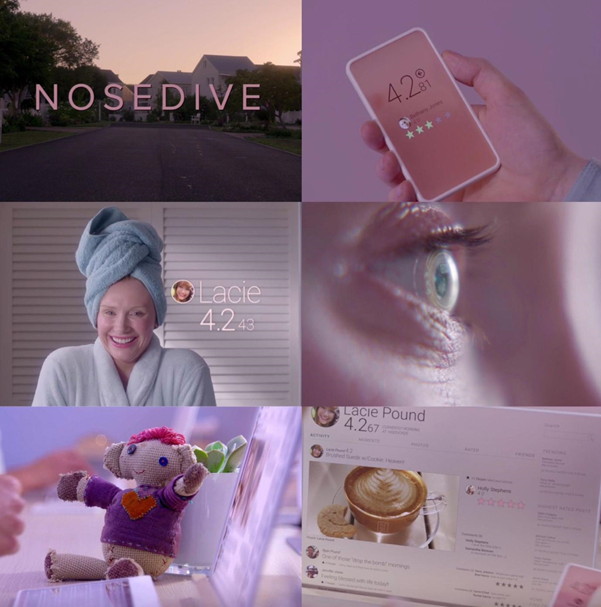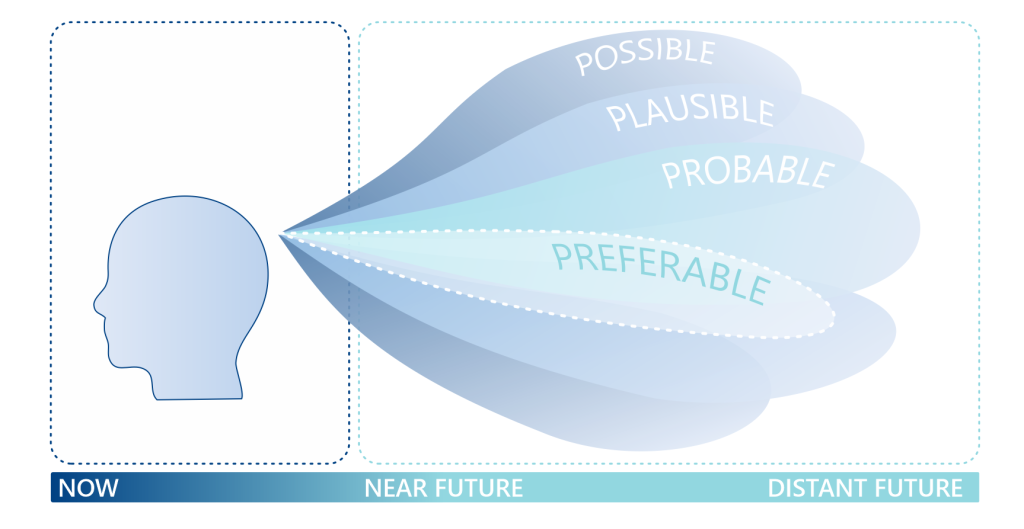Written by: Promila Roychoudhury-Koho, Andrea Vianello and Sami Laine, Siili Solutions
The AI services and products are developed to answer our needs today – or at least in the near future. As the years go by, the needs will change and the technology might be used very differently. In this blog post, we argue that responsible AI development also involves doing our best to imagine such unexpected uses. It is important that we explore, critique, and discuss the way today’s technologies might shape the future.
Developing a technical application comes with a responsibility to think of the long-term implications
The term ‘speculative design’ was coined by Anthony Dunne and Fiona Raby. The two popularized the concept in their book, Speculative Everything: Design, Dreaming, and Social Dreaming (2013).
The aim is to create products and services to match the possible future scenarios. This is a complex task. In contrast to design thinking that focuses on current needs, speculative design broadens the scope and tries to address the bigger societal issues. We should adopt a speculative design approach when we attempt to answer questions about long-term societal implications and preferred outcomes, such as:
● How should AI design impact society?
● How can we design AI for a healthier ecosystem?
● What can we do with AI to influence future cultures?
● How can future technologies impact our AI products and services—and vice versa?
A popular example is the satirical British mini-series called Black Mirror, which draws from the technology development nightmares. One episode vividly and humorously portrays a fictional society where every action is recorded and all functions depend on one’s social credit score. The main character is seen throughout the episode working hard to raise her score. She does this to get hoards of elite benefits that are reserved for the high-ranking individuals, in other words, “the good”.
The use of social credit is not pure fiction, though: in 2007 the Chinese government presented a vision for applying such a system. The concept has been trending ever since as it is seen as a way to increase trust in society. However, the social credit system is more than the individual scores. It is a system of pervasive surveillance that aims to measure many aspects of people’s daily life.

Just like Nosedive can help us imagine the possible scenarios of mass surveillance, all fictional stories are great examples of a speculative design exercise – engaging, tangible glimpses into the future. Cautionary tales, what-if scenarios, thought experiments and counterfactual theories provide plenty of inspiration for mapping plausible scenarios. In speculative design, one must dare to explore, hybridize and borrow ideas and embrace uncertainty.
Technological advancements constantly refine our environment and expectations, broadening our conception of what is possible. We can use methodologies from speculative design to debate potential ethical, cultural, social and political implications. In theory, we are ethically designing the most desirable solution and outcomes (Dunne and Raby 2013).
How to apply speculative design in practice?
In my design practice, the future is currently defined in a two weeks sprint or maybe three months, when the first minimum viable product is ready for the users. Alternatively, it can be interpreted as the two-year increment plan when the product gets another upgrade. But for a speculative designer, the concept of the future is typically seen in horizons and it is normal to start working from the horizon that spans more than a decade into the future.

Ideally, a speculative design project starts with the signal, which involves looking into the world and understanding what is happening and what is emerging, what is bubbling up. We take those signals and lay them against a particular focus, that can be defined e.g. by the industries we are working in, the company we are consulting, a problem that we are exploring or trying to solve, and so on. With that initial signal and focus, we start designing multiple scenarios that provide a somewhat general analysis of where the world is going to be.

The practical challenge in speculative design is to identify different motives for using the technology, including the more controversial ones. For example in smart cities, a plethora of edge computing, cameras and other sensors using 5G wireless connections are expected to form the backbone of a smart city. Counting the number of passing cars on the road helps civic engineers optimize road maintenance, but tracking a vehicle across multiple live camera feeds is a powerful form of surveillance.
The speculative design projects don’t provide answers for creating a new world, where unethical actions could never occur, but rather invoke more questions, thoughts and ideas. They probe our beliefs and values, challenge our assumptions and encourage us to imagine how what we call normal could be different. Speculative projects occupy a space between reality and the impossible, a space of dreams, hopes, and fear. They help us evaluate if the solutions we have designed might not be the only way and perhaps the best way.
In short, speculative design is about reimagining reality. It is the design of future products and services, as a way to understand the implications of emerging technology or social and cultural trends. As designers, creators, or developers, it is critical to engage in such exercises to create concrete strategies for shaping our preferred futures!

